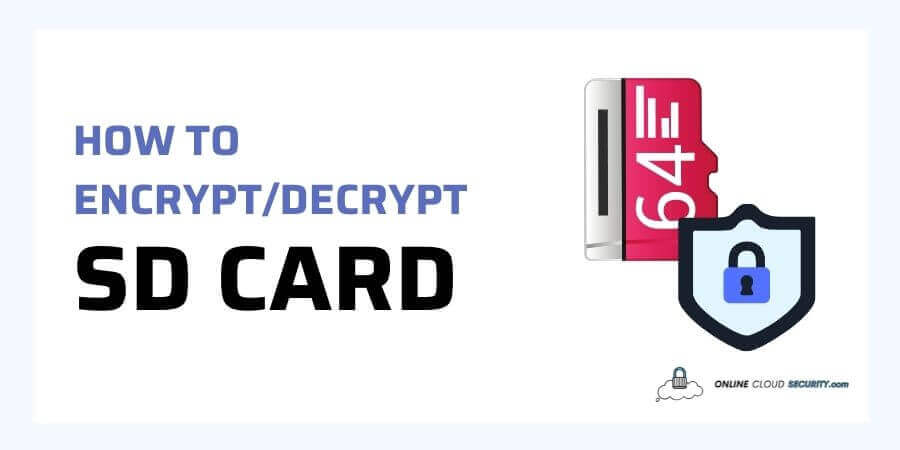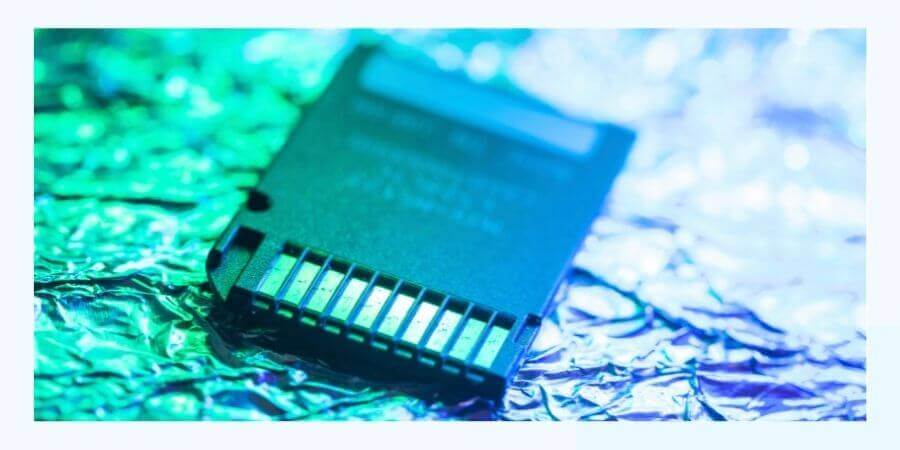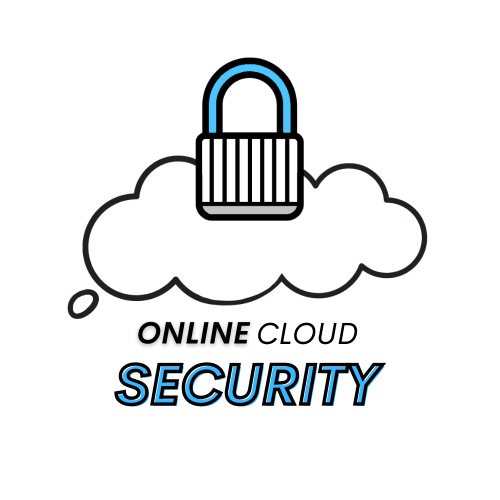
Dave Miller – Tech Enthusiast & Security Expert – April 26th, 2022

SD cards are one of the most valuable removable storage for transferring data since they are portable, convenient and provide on-demand access to data. However, many people have questions about keeping it safe or, more critically, how to encrypt SD Card.
You’ve undoubtedly heard that password-protecting your computer and phone is good. Still, it also applies to your SD card. Because portable storage devices such as microSD cards offer many advantages, they are also subject to malicious attacks and illegal access. Backing up your data is usually one of the most crucial stages in ensuring the safety of your data. Still, it’s much better if you encrypt your SD card having that data.
Read the rest of the article. I will show you how to encrypt removable storage on Windows 10, 11, or macOS so the data saved can’t be read or accessed without a secure password.
As you may know, an SD card, sometimes known as a Security Digital card, is a storage device that allows you to store more data. SD cards have got extensively embraced due to their tiny size. They can get put into a variety of consumer gadgets. The initial SD card configuration got modified multiple times to allow for bigger capacity as the electronics industry progressed.
Since its introduction in 1999, SD cards have got measured in gigabytes (GB), with sizes ranging from a few gigabytes to 512GB. Varied SD cards have different capacities, meaning multiple SD cards are available and utilized today. You must get your hands on the proper one compatible with your device.
SD Standard: This is the earliest version restricted to 2 GB and used the FAT16 file system, which is no longer accessible.
SD High Capacity: This is the superior variant, with cards ranging from 4 to 32 GB. FAT32 is the default file system.
SD eXtended Capacity: With the exFAT file system, you can store up to 2TB of data.
Secure Digital Ultra Capacity (SDUC): It can accommodate up to 128 TB per card in exFAT format.
The good news is that all SD cards follow Secure Digital Association standards, which the group designed and maintains.

The propensity for old standards to become outdated and newer ones to replace them is something you can’t avoid no matter what tech you use. But that doesn’t apply to SD cards. So learning more about SD card security is essential if you want to keep yourself secure. An SD card employs flash memory to offer nonvolatile storage, which means data gets retained without the requirement of a power source.
So, for instance, a misplaced or lost card might get into the hands of someone who could access, modify, or tamper with critical data or erase vital information accidentally. Furthermore, malware attacks on memory cards can occur during firmware upgrades, where malicious code can get inserted to endanger or undermine an organization’s operations. So, what are your options?
SD cards have encryption capabilities for their data, but how can you encrypt an SD card? Depending on the operating system your PC is using, you can do it in various ways. The remainder of this post will cover how to secure your SD cards so that no one can access your data. Because encryption provides an additional degree of protection, no one can access your saved file unless you supply the correct password
Aside from that, towards the article’s conclusion, I’ll offer you the option of creating self-encrypting SD cards, so you won’t have to go through the entire process.
Depending on your OS, you may lock your SD card in various ways. If your PC runs Windows 10 or 11, it has an encryption option. You can also use the built-in encryption tool if you have a MAC. Or you may use SD card encryption software from a third party. Various ways how can you encrypt SD Card along with decrypting it are covered below
Below are the ways to encrypt external storages devices as well as SD cards
BitLocker Drive Encryption is a data protection tool that works with the operating system to safeguard data from stolen, lost, or improperly retired devices. It is compatible with Windows 10, Windows 11, Windows Server 2016, and later versions of Windows. Follow the steps below,
Step 1: If you have an SD card reader, you may use it to connect the SD card to your computer, or you can plug your SD card into a slot if you already have one. Wait for Windows to identify it. Select “Open folder to see files” if AutoPlay appears. You may also open File Explorer by pressing Win + E. Then, in the left pane, choose This PC.
Step 2: Right-click the SD card you wish to encrypt under Devices & drives and select Turn on Bit locker to launch the BitLocker wizard.
Step 3: You will get offered two options in the newly opened window: Use a password to unlock the drive or Use my smart card to access the disk. To open the option, you must first check the password.
Note: If you choose the other option, you will need to insert your smart card, and the smart card PIN will be required when you unlock the drive.
Step 4: A pop-up window will display, prompting you to enter the password twice.
Step 5: The next step is to build a backup of the security key you’ve made if you misplace it. You may save it to your Microsoft account, save it as a file, or print it. Window 11 also gives you the option to store it on a USB flash drive
Step 6: You may now encrypt either your entire device or only the utilized section of your SD card. You get done encrypting your SD card after checking the needed option.
If you’re using a Mac, ensure sure FileVault gets turned on and the device gets hooked into a power source before turning it on. Go to System Preferences and select Security & Privacy from the drop-down menu on a PC. Once activated, the Turn Off FileVault tab in System Preferences will get grayed out. The way FileVault works depends on the Mac model you have. Follow the steps below
Note: Apart from putting in the power supply, you must first wipe the device before using Disk Utility to encrypt and protect it with a password. If you wish to save files from the device, Make sure you copy your data to some other storage device or volume as well for backup
Step 1: Insert the SD card and launch Disk Utility after macOS recognizes it.
Step 2: Select the storage device you wish to encrypt from the sidebar. In the toolbar, click the Erase button. And give your volume a name. There, choose GUID Partition Map from the Scheme pop-up menu.
Step 3: Click Done when the formatting gets finished. You may now encrypt the newly formatted disk by right-clicking the card listing in the left pane. Tap Encrypt X in the box that appears.
Step 4: You’ll be required to enter an encrypted password and a password hint in the newly opened window. After filling out the information, click Encrypt Drive to encrypt the disk and make it inaccessible without the protection password.
Note: Although Apple’s M1-based Macs will contain a Secure Enclave module, they will not be able to use FileVault on an external bootable drive
There is a multitude of third-party encryption software available on the internet. All you have to do now is pick the most suitable and reputable option. Here’s what I’d suggest:
GiliSoft USB Encryption is a complete, user-friendly USB security solution and works for SD cards. After encryption, it will partition an external drive into two sections: a secure region and a public area. Turning an ordinary SD card into a secure one takes less than a minute.
On-the-fly 256-bit AES encryption gets used to encrypt data in the protected area (Secure area). The program is simple to download and install. After starting the application, choose the drive and specify the size of the secure region. Enter the particular area’s user name and password and click the “OK” button to complete the procedure.
It is compatible with Windows 2000/XP/7/10/11, and a trial version is also available. If you want to purchase it, it will cost you $49.95 for a single PC with lifetime updates.
UkeySoft File Lock is a password-protected program for locking and concealing files, folders, and drives and encrypting and protecting sensitive information. It can also successfully defend sensitive data from viruses and Trojan horses. It employs the most recent 128-bit symmetric key for AES (Advanced Encryption Standard), protecting computers against violent attacks. Its security keys are never compromised.
It has no impact on your computer’s performance, security, or speed, ensuring the integrity and confidentiality of your personal information with 256-bit algorithms. It costs around $39.95 for 1 PC for the lifetime license and is available on Windows 11/10/8/7/XP/vista and MAC. You can try the free version before trying.
VeraCrypt is a free, open-source disk encryption program provided by IDRIX for Windows, Mac OS X, and Linux. It gets based on TrueCrypt 7.1a. And it encrypts a whole partition or storage device, like a USB flash drive, SD card, or hard disk. VeraCrypt improves the security of the methods used to encrypt the system and partitions, making it resistant to new brute-force assaults. Veracrypt does not include a “backdoor” that allows data to get decrypted without having the correct password or key.
Keep in mind that you won’t be able to restore your files until you figure out the password you used or the key you produced with VeraCrypt. As a result, be sure you never lose sight of the key.
To encrypt, select a disk slot from the main window of the VeraCrypt software, click the Choose Device button, select the encrypted SD drive, and click Mount. The encryption password will get requested. After you’ve got authorized, you can use the device. It is available on MAC and Windows as well.
If you have an encrypted SD card using FileVault on mac and now no longer wish to utilize encryption. You may turn it off forever. The encryption will get removed due to this action allowing you to use the card on systems that do not support FileVault.
Step 1: In Finder, right-click on the disk and select Decrypt to disable encryption.
Step 2: If you recall your encryption password, you will get requested for it. If not, choose Erase and enter the SD card’s name and the filesystem format.
Step 3: MacOS will deactivate encryption from the SD card once you confirm your decision; this will take some time.
Step 4: Once complete, you can remove your SD card and use it generally without restriction.
If your SD card is BitLocker-encrypted, you can securely unlock and remove the encryption using the command port by following the steps below.
Step 1: Connect your computer to your SD card. Go to the Start menu and type cmd in the run box to launch the command prompt.
Step 2: Within the command prompt, type diskpart and press Enter.
Step 3: Now, you must choose the drive that must get decrypted.
To do so, type the instructions shown below.
List disk
Select disk X ( X refers to the disk number of your encrypted SD card)
Clean
After completing the procedures above, your SD vehicle will get decrypted. You will be able to use it without the password.
Note: The Diskpart program will decrypt the SD card and delete any data, regardless of whether you have a backup. If you have stored any critical data on the SD card and used the clean command. In that case, you may still recover data from the SD card using robust data recovery software.
MiniTool Partition Wizard, a superb partition organizer, and aid, is another approach to decrypting SD cards on Windows 10. It is a more user-friendly version of Command Prompt for Windows. Aside from that, the program serves as a one-stop-shop for disk setup, data recovery, and phone recovery.
Following the download and installation of the program, Insert your encrypted SD card and pick Wipe Disk from the context menu. You can choose the File System, Drive Letter, Size, and Location once the Wipe gets completed. Now that you’ve unlocked your encrypted SD card, you may use it as a new storage device. The Lifetime upgrade + data recovery + 5 PC license costs $159, although there is also a free version.
A self-encrypting drive encrypts data before it gets written to the disk. It does not require any human input or additional software to encrypt or decode data. A 256-bit symmetric cipher key is generated by SEDs using AES-256 encryption and handed to the engine. Unauthorized access to sections of flash storage is protected using AES techniques. Self-encryption provides high levels of protection for data at rest, and several companies are offering these options like
Protecting your files from intruders is always smart, especially on SD cards. I’ve examined numerous methods in this article, including built-in solutions, paid applications, and even free source options. Now it’s up to you to choose the most convenient one for you and your operating system. If you don’t want to delve into it, a self-encrypting SD card will save you time in the long run while still offering the security you require.
Nonetheless, encryption and decryption processes are straightforward; when completing the instructions, you should exercise caution. A minor error might result in irreversible data loss if you forget your recovery key. You’ll have to wipe the SD card and lose your data if you don’t know the passcode. Don’t forget to select the file system depending on the type of SD card you are using to avoid the corruption of the file.
**Onlinecloudsecurity.com is a participant in the Amazon Services LLC Associates Program, an affiliate advertising program designed to provide a way for websites to earn advertising revenues by advertising and linking to Amazon.com and affiliated sites. As an Amazon Associate we earn affiliate commissions from qualifying purchases.**

Dave Miller is an IT Consultant for Online Cloud Security and has over 7 years of experience in the Information Technology space. He also specializes in repairing laptops & computers. In his spare time, he loves to talk about new technologies and hosts monthly IT and Cyber Security meetings in the Houston area.
Click any button down below to share this article on the following channels:

Online Cloud Security is here to recommend you the most secure devices, from laptops to smartphones, we only want to provide you with products that we have tested and used ourselves for online security. Every product that we recommend is heavily inspected and tested for security against hackers, viruses, malware, and any other intruders that may want to steal your information.

Online Cloud Security is here to recommend you the most secure devices, from laptops to smartphones, we only want to provide you with products that we have tested and used ourselves for online security. Every product that we recommend is heavily inspected and tested for security against hackers, viruses, malware, and any other intruders that may want to steal your information.
Your Trusted Source for Online Security